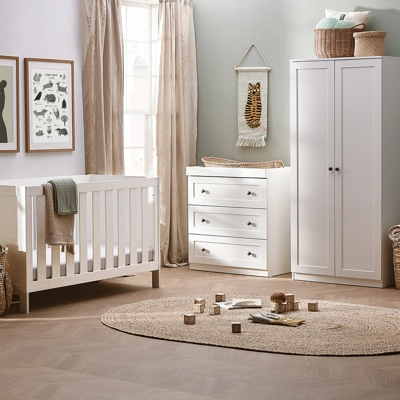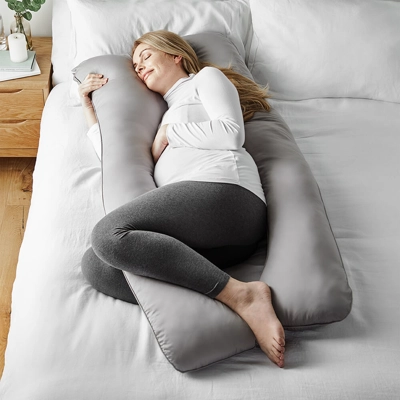
Top tips for breastfeeding success
Breastfeeding peer supporter shares her advice on starting your breastfeeding journey
Author
Kat Gemmell
As well her career in children’s Car Safety, Silver Cross’ Car Safety Technologist, Kat Gemmell is also trained as a breastfeeding peer supporter.
Kat shares her top tips for starting your breastfeeding journey, based on her experience having worked for a local feeding charity as well as the maternity ward her children were born in.
Latching your baby correctly
- Watch LOTS of breastfeeding videos before you have baby – the way a baby is breastfed is a different position and process to bottle feeding, and it doesn’t always come as naturally as you expect.
- Breastfeeding should NEVER hurt. If you experience pain when feeding, something is amiss. Here’s a few things to remember when latching your baby.
- Check they are latched correctly by inserting your little finger into the corner of their mouth and breaking their latch. Check your nipple – it should be slightly larger and round like a fruit pastille. If your nipple is lipstick shaped, baby has not been latched deeply enough and has been compressing your nipple against the hard palate in the roof of their mouth. Re-latch baby, ensuring they take a large mouthful of breast to get the nipple to the back of their mouth by the soft palate.
- A few seconds of pain which quickly passes is OK – this means your nipple wasn’t quite in the right place but has moved to the soft palate.
- If after position and attachment support, you still experience pain, have baby checked for tongue tie. Most tongue tie will not impact feeding; however, some will prevent baby’s tongue moving correctly.
- It is very normal for the first feed or two to go perfectly, then baby can seem to lose all interest, or flail around crying. This is very normal; stick with it and take all the help you can get – baby will get the hang of it after a few feeds!
- Start with baby’s head by your cleavage. Many new mums (myself included) overshoot the position and have baby in the crook of their arm. This tends not to line up with the nipple and isn’t usually a good position when learning the ropes.
- Remember it is breastfeeding – not nipple feeding! The nipple is where the milk comes out, the breast is where the milk comes from. Baby needs to have the nipple as far back in the mouth as possible. A way I used to explain this in the hospital is: Chin to skin – nose to nipple. You will hear nose to nipple a lot, but baby needs to start close to the breast:
- Start with baby’s head by your cleavage, then move them forward into position.
- Position baby’s chin at the bottom of the areola (the dark skin around your nipple) and have the nipple pointing to their nostrils.
- Baby will do a wide open mouth, like a big yawn, which is your sign to bring baby onto the breast. You should see more areola at the top of baby’s lip, with their chin indenting your breast.
Positioning and hold
- Try not to hold the back of baby’s head. If you are feeding in the cradle or cross cradle position (what you think of as a traditional hold), you will feel like baby’s head is going to fall off and be tempted to hold the back of it – baby needs to move their head freely to bob about for the nipple and latch on.
- There are lots of positions to try, and the traditional feeding positions may not work well straight away – this is OK! Laidback feeding is a nice one to try as baby can bob their head around to latch on, and you don’t feel like their head is going to fall off.
- Rugby hold is an excellent option for C-Section mums as it keeps baby away from your incision.
- If baby has any head trauma after delivery (such as forceps), and you feel able to, side lying feeding can be a successful way to latch baby on as they can be a little sore post-delivery. I had a lot of success with this position in the hospital.
- Remember the CHINS acronym:
C – keep baby Close
H – Head free to tilt
I – baby In line (don’t have them laid on their back and twisting their head to latch – remember head, shoulders, knees and toes in line. You might also hear “tummy to mummy” although this is less important as they get older)
N – Nose to nipple
S – Sustainable: you could be a while feeding baby, make sure you’re comfortable and have everything you need to hand!
Cluster feeding
This usually happens once your milk comes in, but I’ve seen it happen from birth in the hospital. There is no way to avoid cluster feeding, so settle yourself down for a few hours of constant feeding. It is really important that baby is allowed and able to cluster feed, as this builds your milk supply – think of it as your baby putting their order in for the coming days and weeks.
Cluster feeding usually happens in the evening. You will give baby a feed, and it will seem like a good feed. Pop them down, a few minutes later, they’re rooting again. Feed on the other breast, and the same thing happens. They are on and off the breast for what seems like forever (it can be a few hours!). You’ll be left wondering if you’ve got any milk at all as your breasts will feel flat and empty. Next, worry will trickle in that you’re not making any milk for them and that is why they seem so hungry.
Cluster feeding can be one of the most tempting times to give a bottle top up, and is one of the few times I would advise to absolutely avoid it.
The hormone prolactin helps your body to know when to make milk. If milk is in your breasts, your prolactin levels are telling your body there is plenty of milk here, no need for more – this will in turn reduce your supply, because your body has noted that the milk hasn’t been removed. This can negatively impact your milk supply.
When your breasts are continually drained of milk, they make more milk and this builds up your milk supply. When baby cluster feeds, they are making sure your breasts are being drained so your body produces more milk for their growing needs.
- Drink plenty of water – I used to aim for one pint of water while feeding/expressing (same rule applies for both). Make sure you are eating a varied, healthy diet. You may find you are hungrier when breastfeeding, so load up on the healthy snacks and listen to your body.

Author
Kat Gemmell
Kat Gemmell joined our car safety team with over a decade of experience supporting parents to choose, fit and use their child car seats safely. She has worked for a national child seat campaign, provided product training for child seat manufacturers, and ran online information websites to support parents in making a truly informed choice. As well as her background in car safety, Kat also spent many years as a breastfeeding peer supporter, having worked for a local feeding charity as well as the maternity ward her children were born in.





